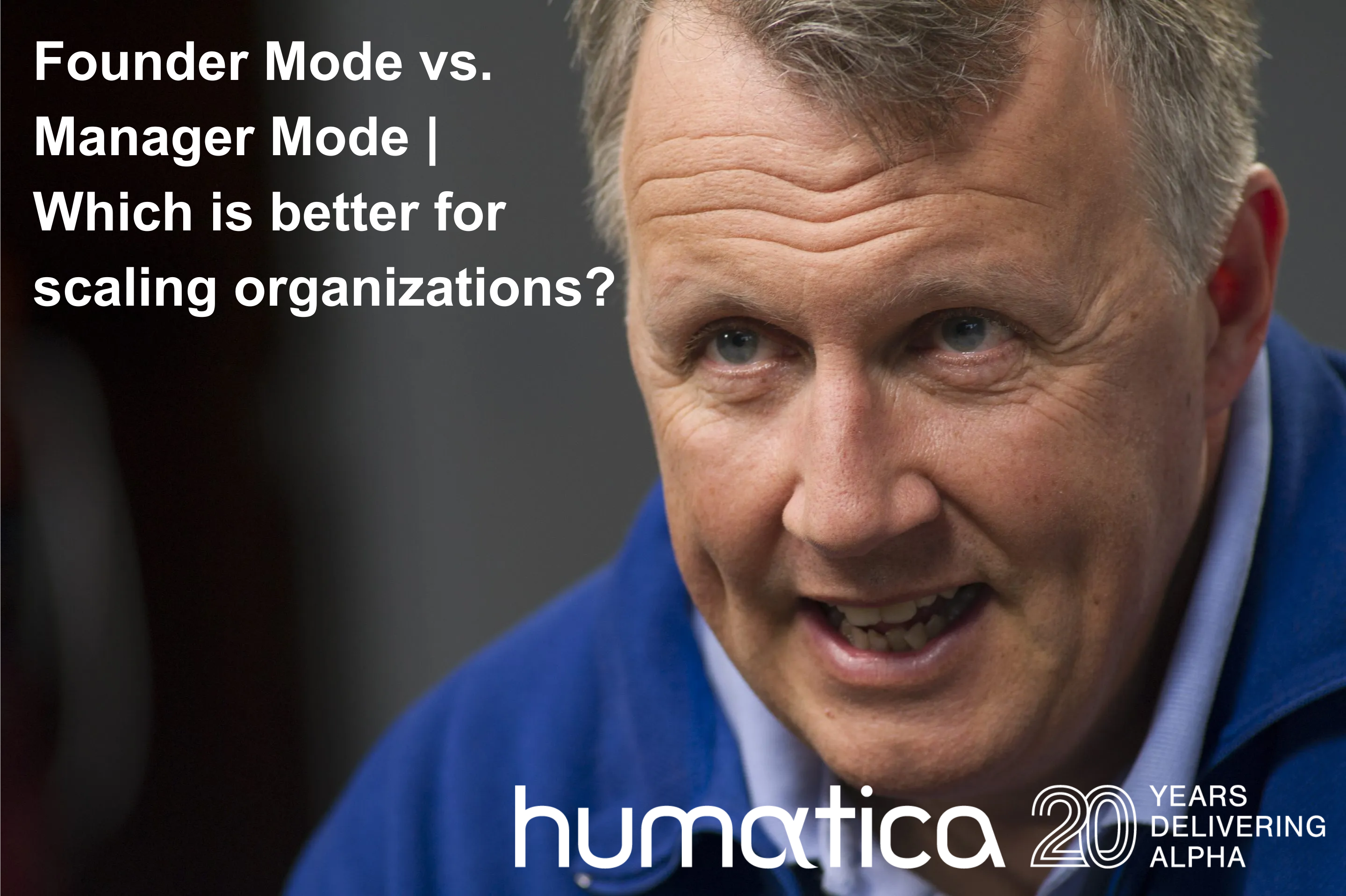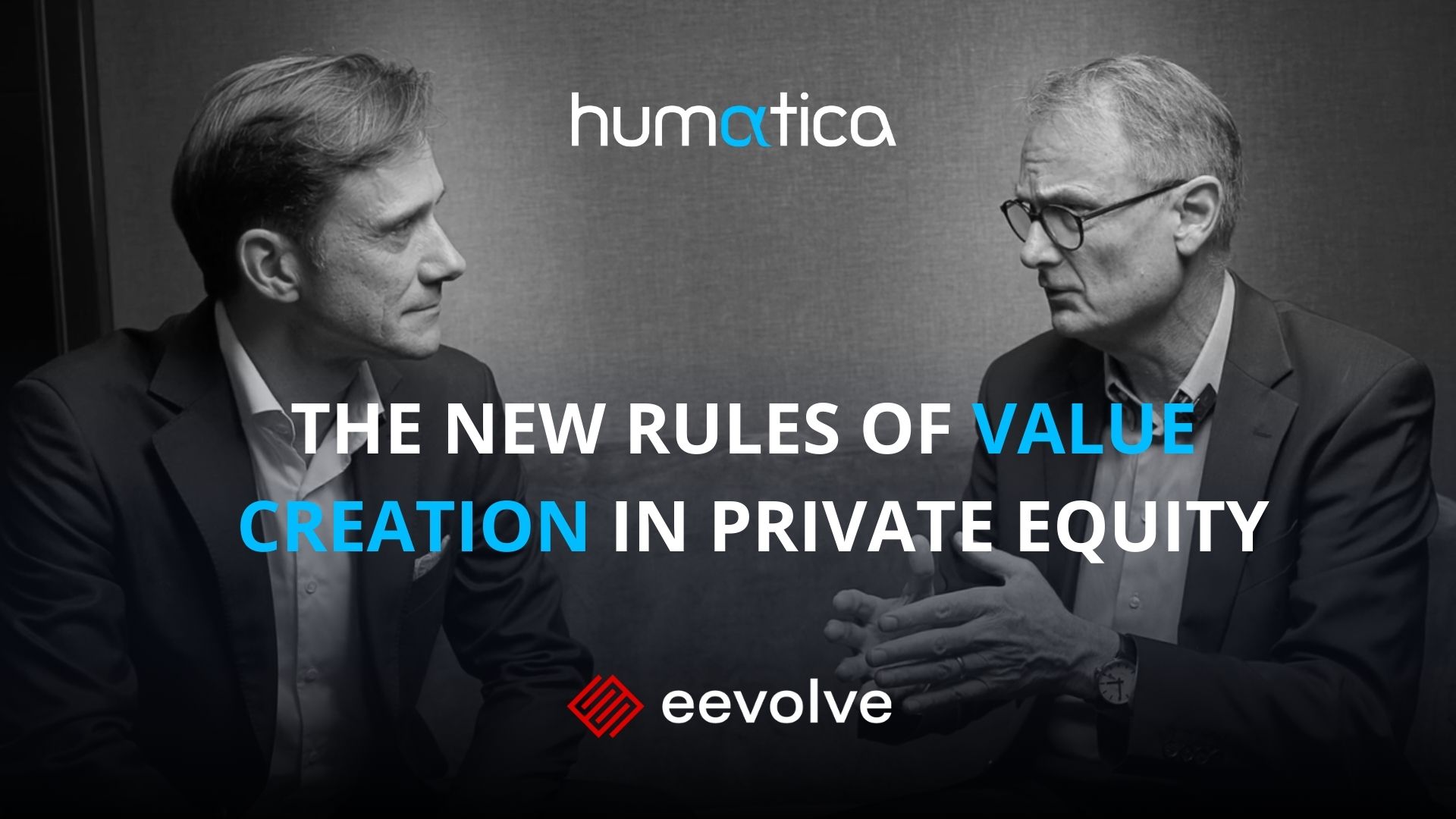
In the bustling world of Silicon Valley and beyond, a new paradigm is stirring up debate: “Founder Mode” vs “Manager Mode”. Paul Graham, co-founder of Y Combinator, ignited this conversation with his recent article, in which he challenges the traditional wisdom around building organizations for scaling businesses. But in this dichotomy of leadership styles, are we missing a crucial question: What is it that truly drives sustainable value creation in growing companies?
Graham’s article reads like a rallying cry for founder-led companies. He boldly claims, “There are things founders can do that managers can’t, and not doing them feels wrong to founders, because it is.” It’s a seductive narrative, isn’t it? The visionary founder, deeply connected to their creation, outperforming the professional manager at every turn. But let’s pause for a moment. Is this the whole story? Will what got you here always work in subsequent phases of growth and get you there?
Consider this: While Airbnb’s Brian Chesky was rediscovering his founder mojo, what was happening at Microsoft under the leadership of Satya Nadella, a professional manager who had never founded a company? Or at Adobe, where Shantanu Narayen was quietly orchestrating one of the most successful business model transformations in tech history?
Now, let’s give credit where it’s due. Graham is spot-on about one crucial point: simply drawing up an organization on a napkin and giving marching orders to department heads is a recipe for failure. It’s a trap that many growing companies fall into, mistaking delegation for abdication. But does avoiding this pitfall require one to be a “founder”?
Let’s dig deeper. The most effective leaders, whether founders or professional managers, share common traits. They’re not afraid to get their hands dirty when the company faces a specific challenge. They maintain a deep connection with their products and customers. And crucially, they are not self-absorbed. A true leader is willing to think things through and, having gathered all points of view combined with the hard facts, make informed decisions that drive the company forward.
Take Nadella’s approach at Microsoft. He didn’t just delegate and hope for the best. Instead, he challenged the status quo and recognized the need for change. He re-underwrote the company’s strategy and formed the organization to focus it on delivering the new strategic focus. The result? a reinvigorated Microsoft that has more than tripled its market cap under his leadership. Talk about value creation.
So, what’s the real challenge for growing organizations? It’s not about choosing between “Founder Mode” and “Manager Mode” – that would be highly narcissistic. It’s about developing a robust process for scaling that maintains the company’s core strengths while adapting to new complexities. To stay nimble, even as the company scales.
How does this work in practice? It starts with a clear understanding of the company’s value drivers and strategy. From there, leaders – not CEOs alone – must collaboratively design structures and processes that reinforce these elements while enabling growth. This is about finding compromises between the key economic drivers and thinking through the processes, interfaces, and substructures, before selecting the people for each role.
It’s a delicate balancing act. How do you maintain the agility of a startup while building the processes necessary for a larger organization? How do you ensure that decision-making remains swift and informed as the company grows? These are the questions that truly matter, regardless of whether you’re a founder or a professional manager.
The key lies in creating an organizational fabric that’s both strong and flexible. It’s about designing systems that allow for rapid information flow and decision-making, while also providing the structure necessary for coordinated action. It’s about fostering a culture where everyone, from the C-suite to the front lines, feels empowered to contribute ideas and flag potential issues.
But here’s the catch: there’s no one-size-fits-all solution. Each company must find its own path, based on its unique value drivers, market position, and growth objectives. It requires constant attention, regular reassessment, and the willingness to make changes when necessary.
In the end, whether you’re a founder like Chesky or a professional manager like Nadella or Narayen, what matters most is the resilience one must have to identify the need for a change and go through the tough work required to break the business down to its core essentials and re-design it from the ground up without nostalgia or loyalty to people or legacy structures.
It is a fascinating journey, for which expert guidance can save time and reduce risk along the way.

In today’s private equity landscape, the classic levers of value creation are no longer enough. As markets evolve and competition intensifies, governance is emerging…
Read more
Measuring organizational performance is difficult, especially in a way that is both systematic and genuinely useful for decision-making. In a recent Alpha Talks conversation, Ueli…
Read more
Unpacking the root causes behind underperformance and how to resolve them It’s a familiar scene: Over dinner, a client lamenting inconsistent results across their portfolio…
Read moreErhalten Sie jeden Monat Neuigkeiten und wertvolle Perspektiven zu Themen der organisatorischen Effektivität